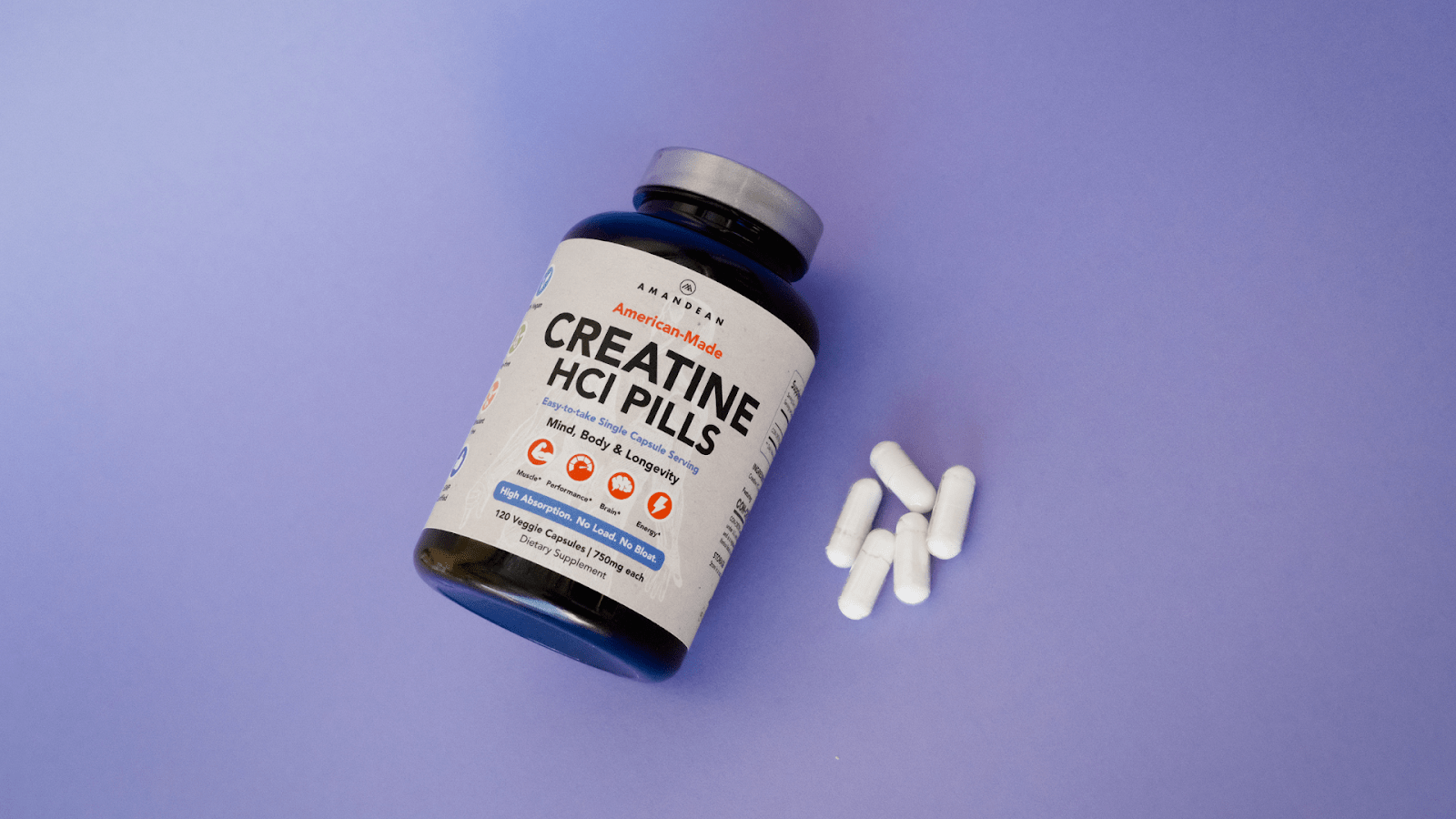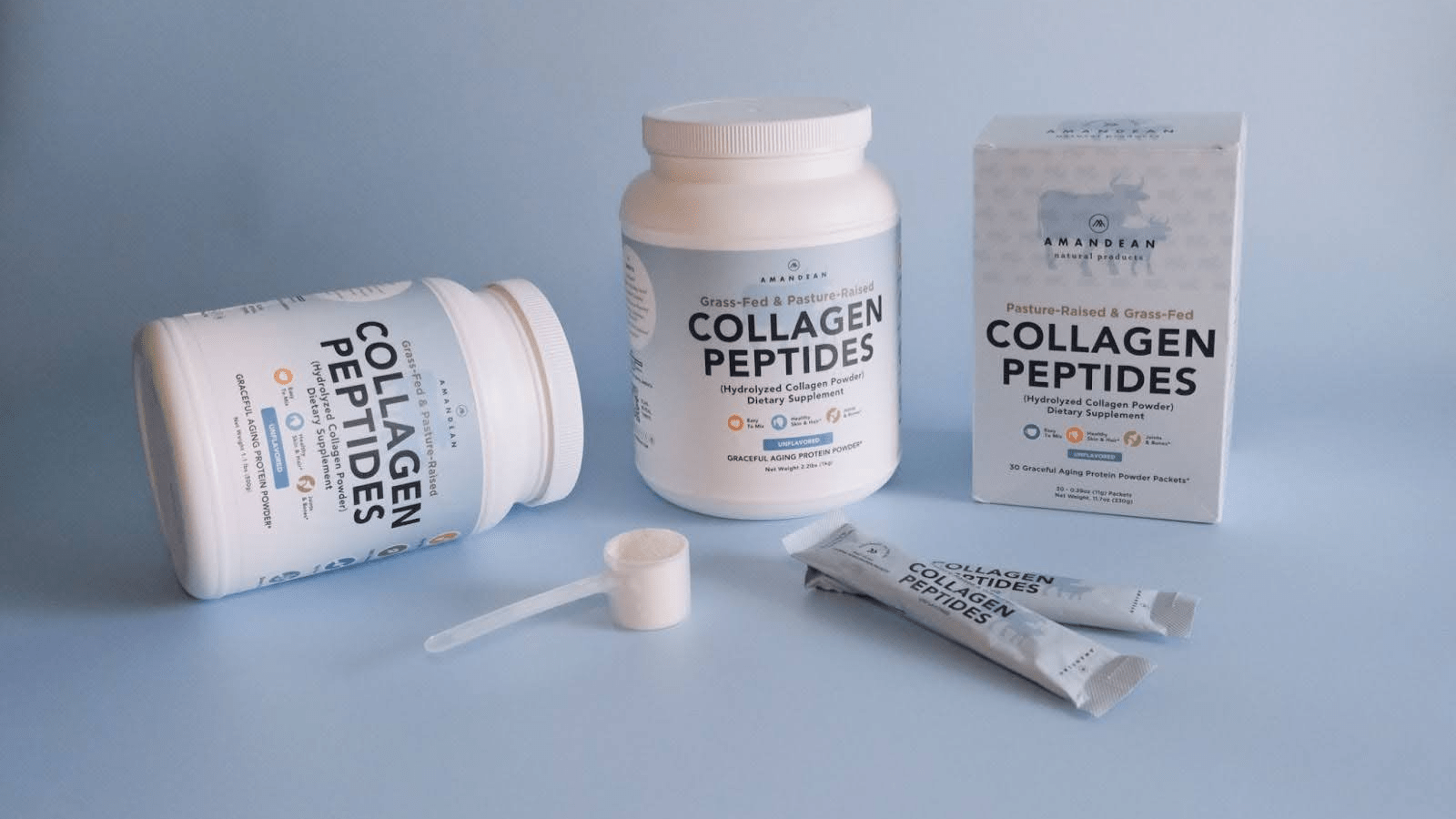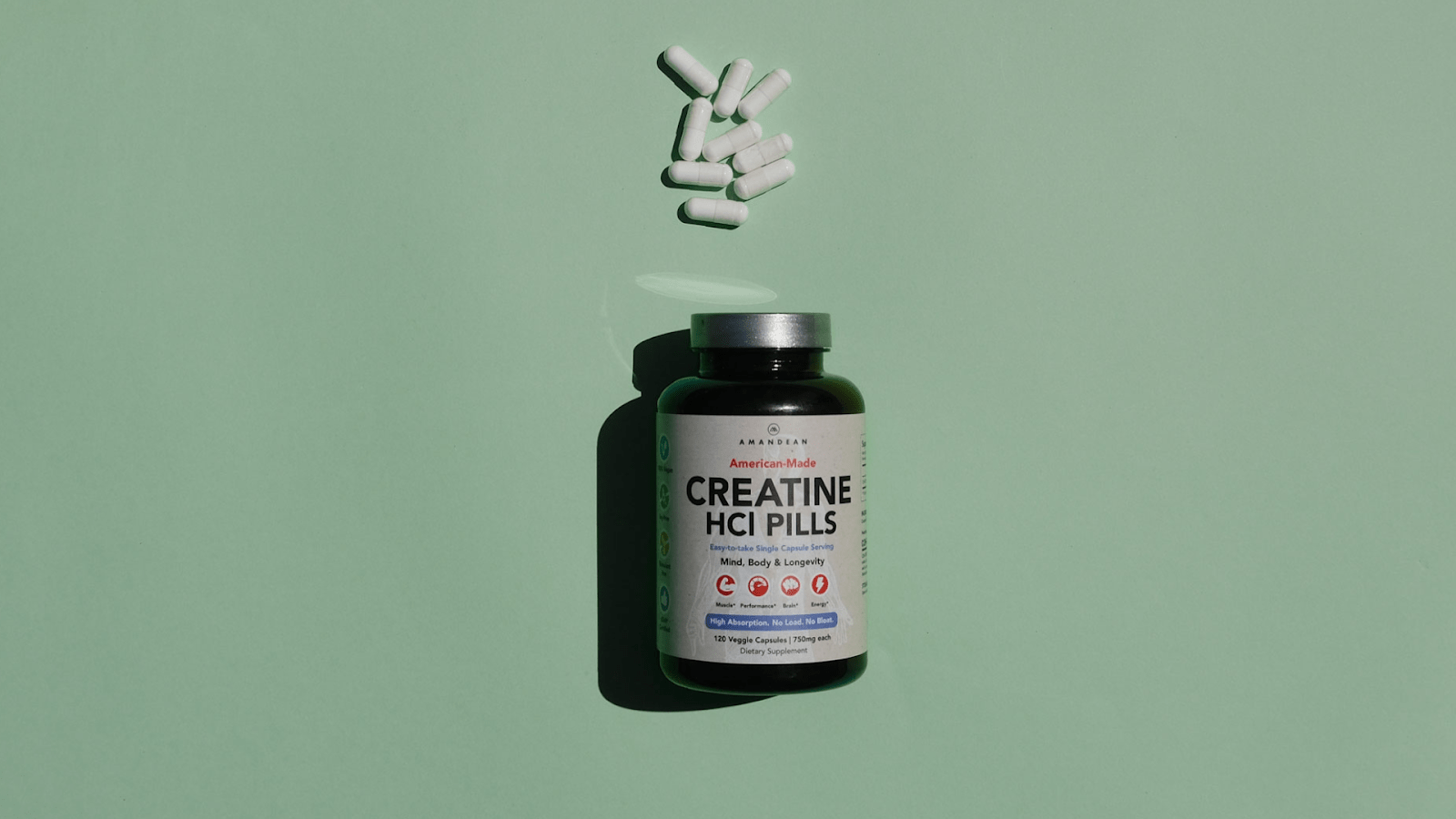Your Cart is Empty

February 07, 2023 7 min read
Glossy hair, strong nails, and glowing skin may be signs of a great beauty regime, but the importance of a healthy diet shouldn't be underestimated. Food contains lots of beauty nutrients, which people have used for thousands of years, inside and out. Today we can wash our hair and moisturize our skin with honey, rosemary, rosehip, avocado or olives, to name a few.
There's no magic food that will keep us looking forever young, but diet (and lifestyle and attitude) does affect how your skin looks and ages. Take these eight food steps to strong, healthy skin, hair and nails.
Take our quiz and find which supplements your body is craving.

Skin, hair, and nails are mostly protein. These proteins – keratin, collagen and elastin – ward off wrinkles and provide strength and elasticity. Most of us eat plenty of protein from meat, chicken, fish, legumes, eggs and dairy foods.
Grass-fed Collagen Peptides are an excellent source of protein, with the added benefit of being the same amino acid protein chain that makes up 80% of our skin, nails, joints, ligaments and cartilage. A study by Minerva Research Labs in 2015 describes the science:
Numerous clinical trials have now been performed showing the efficacy and benefits of collagen peptides on skin properties, such as hydration, elasticity, and reduction of wrinkles. As a result, hydrolyzed collagen supplement can be considered an important weapon in the everyday fight against skin aging.
Adding a little bit of collagen could make all the difference to your skin.
The body needs fat. Not the greasy pastry and pie type, but the essential omega-3 and omega-6 fats. If you have a dry, itchy scalp or skin, you may not be eating enough of these. They are called 'essential' fats because the body can't make them; you have to eat them.
Both omega-3 and omega-6 fats produce hormone-like substances called prostaglandins, which then change into other substances that affect immunity and inflammation in the body. Omega-3 fats suppress inflammation, immune responses and blood clotting. Omega-6 fats are also essential for healthy skin, but too much can cause inflammation and allergic responses. For healthy skin, we need a balance of both types of fat. Our Western diet tends to have a higher ratio of omega-6 to omega-3 than ideal. Eating some fish each week, especially oily fish such as salmon, sardines, and tuna, increases omega-3s for a better balance. Oily fish provide the long-chain omega-3s, EPA, DHA, and DPA. If you can't eat fish, try flaxseed. Flaxseed (linseed) oil is the richest source of α-linolenic acid (ALA) – another omega-3 fat. Some ALA can be converted to the long-chain omega-3s, but it provides less than fish.
Studies using large doses (3-4g) of fish oil found it improved dermatitis and psoriasis in some, but not all, people. They also found the higher amounts of omega-3 fats in the skin were prone to oxidation – just like oil going rancid when exposed to light – so we don't recommend mega-dosing on fish oil tablets. Instead, eat a few fish and vegetable meals each week – fish for the fat and vegetables for antioxidants.
Tired and lacking in energy? This may be a symptom of low iron. Hair, nails, and skin can also suffer if you're lacking in iron. Skin may be very pale, become itchy, or there could be cracking at the side of the mouth. Nails can become brittle and develop vertical stripes, or even become spoon-shaped. You could shed more hair and it will be noticeably more dry, brittle and dull.
Swapping your croissant and sugary cereals to oats and muesli will boost your intake of essential fats, B vitamins, and the potent antioxidant, vitamin E. B vitamins could easily be called the 'skin vitamins' because a deficiency often shows up as itchy, dry skin. Whole grains have all three parts of the grain – the bran, endosperm, and germ. Refined, white flour based foods miss out on the bran and germ, which is where all these goodies are.
Nuts are little nutrition nuggets – packed with essential fats, vitamin E, and B vitamins. I was once the dietitian for a heart disease study, where people who had had a heart attack were asked to eat 50g of peanuts a day for 6 weeks. Two women, in particular, noticed a huge improvement in their hair and nails. It's likely that, after years on low-fat diets, the peanuts gave these women some much needed essential fats.
Vitamin C is essential to make collagen, the structural cement of the body. Under the skin, collagen is the fibrous tissue that plumps it up giving support and shape. As skin ages, it loses collagen.
When we breathe car fumes, cigarette smoke and lie in the sun, harmful oxidation reactions happen in our skin and body. Vitamin C, E, and beta-carotene are potent antioxidants that mop up the harmful by-products of oxidation and slow down damage to the skin. Large doses of vitamins C, E, and beta-carotene help protect the skin from sunburn and improve its resilience to things that could irritate it. But when taken as supplements, sometimes the antioxidant activity shifts to harmful pro-oxidant activity. How to prevent this? Skip the pills and eat lots and lots of antioxidant-rich fruit and vegetables. Also, add a quality Liposomal Vitamin C supplement to your daily nutrition.
Eating plenty of kiwis, oranges, lemons and grapefruit may not have the same instant 'plumping out' effect as a collagen implant but with its vitamin C and hundreds of anti-aging antioxidants, it is natural beauty therapy at its best.
Large doses of beta-carotene improve its resilience and to a certain degree helps protect skin from sunburn, especially when eaten with other carotenoids like lycopene (found in tomatoes and watermelon).
Dermatologists often use high doses of vitamin A to treat acne, but this needs medical supervision as it can damage the liver and cause birth defects.
Both carotenoids and flavonoids help protect skin against UV damage and can improve skin hydration and condition. For well-hydrated skin, hair and nails, drink plenty of water. The fluids and flavonoids aid blood circulation and the delivery of nutrients, so give yourself a daily flavonoid dose with a few cups of black, green or white tea and, depending on your mood, a glass of red wine, a cup of collagen hot chocolate or a few squares of dark chocolate.
Never allowing your skin to be exposed to the sun may preserve your youthful skin, but the joy of having beautiful skin may be overshadowed by more pressing concerns if you develop weak bones as a result. There's no doubt UV rays from the sun are damaging to skin, but our skin does need some sunlight so it can produce vitamin D, which is essential for healthy bones because of its role in the absorption of calcium.
So balance the needs of your bones and your skin by not exposing skin to the sun when it is most intense; that's between 10am and 4pm in summer. The winter sun is much weaker and won't harm your skin. And remember the darker your skin, the longer exposure it needs to produce vitamin D.
Omega-3 fats (ALA, EPA, DHA, DPA)
Many of us need more of these.
Some say yes, others say no. A recent study found an improvement in acne when the men studied ate a low glycemic load diet. This means they ate a reasonable amount of protein and less high GI carbohydrate. The carbs they did eat were lower GI and included more whole grains, pasta, and fruit. The theory is that eating lots of white bread, cakes, refined cereal and other high GI foods increases insulin levels, which increases androgen (a male hormone) availability, which stimulates sebum production. So if you want the best skin you can, ditch the refined cereals and choose more whole grains, and fill up on vegetables and fruits rather than cake.
Not enough zincshows up as slow wound healing, fragile hair, and hair loss.
Not enough iron shows up as spoon-shaped nails and cracks at the corners of the mouth.
Not enough VITAMINC shows up as scurvy, bleeding gums, slow wound healing, bruising, and physical weakness.
Not enough vitamin B2 (riboflavin) shows up as cracks at the corners of the mouth, waxy dermatitis around the creases of the nose, and oily skin with dry, flaky patches.
Not enough vitamin B3 (niacin) shows up as flushed, sunburnt looking skin.
Not enough vitamin B6 shows up as skin rashes and dermatitis.
Not enough essential fats, omega-3, and omega-6 shows up as dry, itchy scalp and skin.
It’s easy to think that a good skincare routine is all you need for healthy and beautiful skin and strong nails. However, the state of our skin, nails, and overall physical appearance is an outward reflection of our health, so it’s important to optimize nutrition in order to achieve radiant skin from within. Since we aren't able to get enough valuable nutrients from dietary sources, supplementation is advised. Visit our online store for more information.

October 17, 2025 8 min read
Find out why creatine is better for vegans! Boost your wellness game and unlock peak performance with Amandean's premium supplements today.

October 16, 2025 7 min read
Learn whether collagen in coffee is just another wellness fad. Examine the facts, benefits, and how to use collagen in coffee for beauty and joint support.

September 22, 2025 9 min read
Unlock the full benefits of creatine for women. Boost energy, beauty, and brainpower with Amandean’s clean formulas.